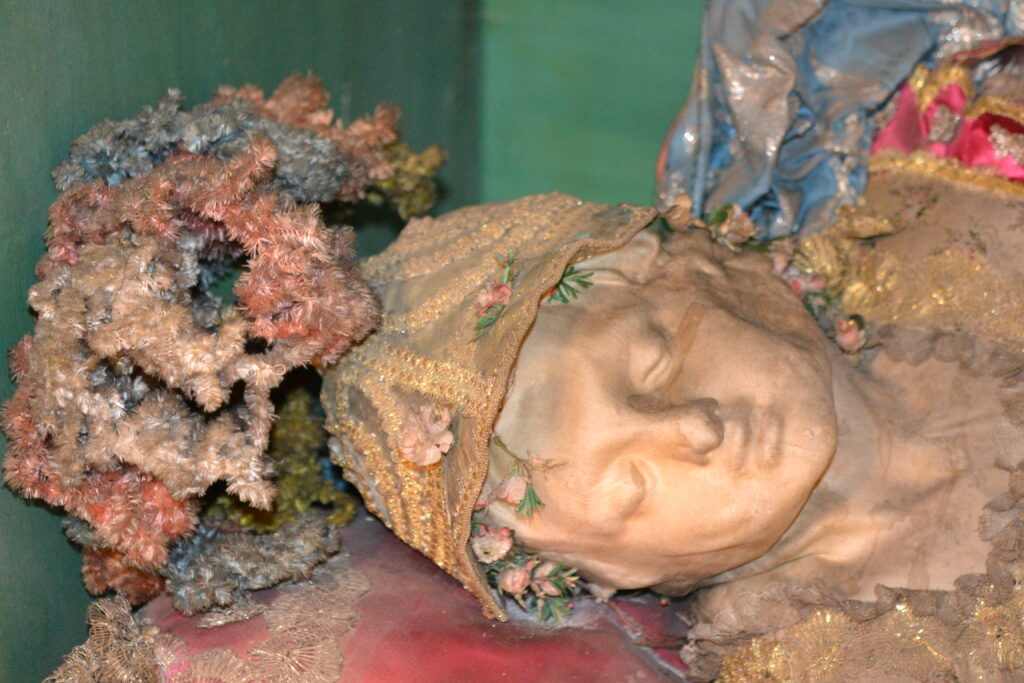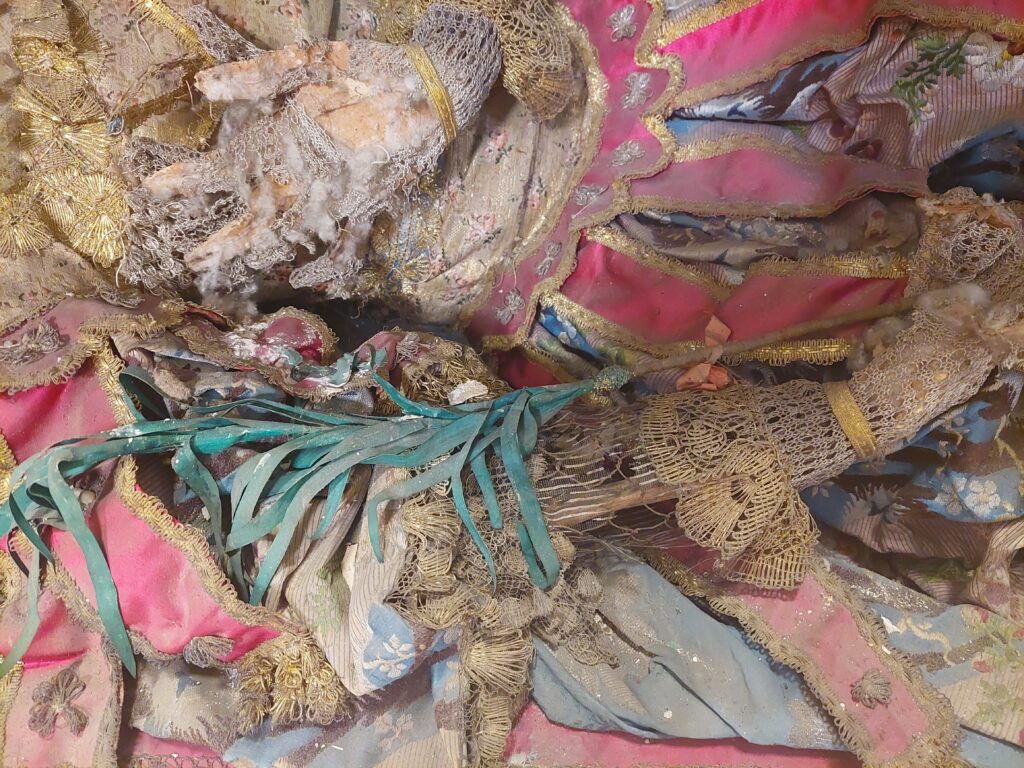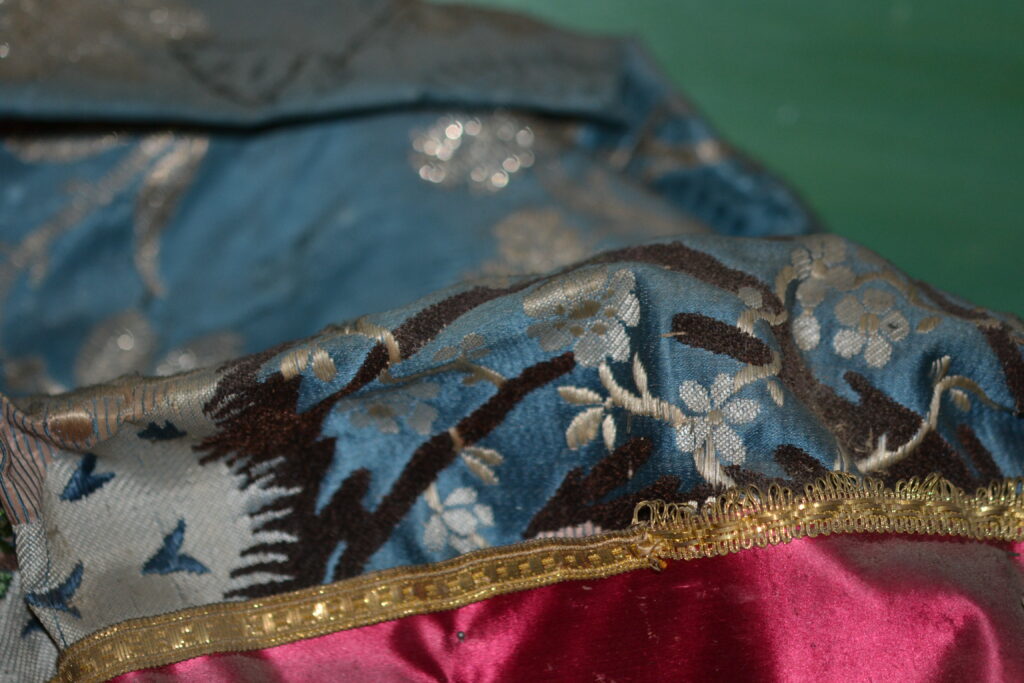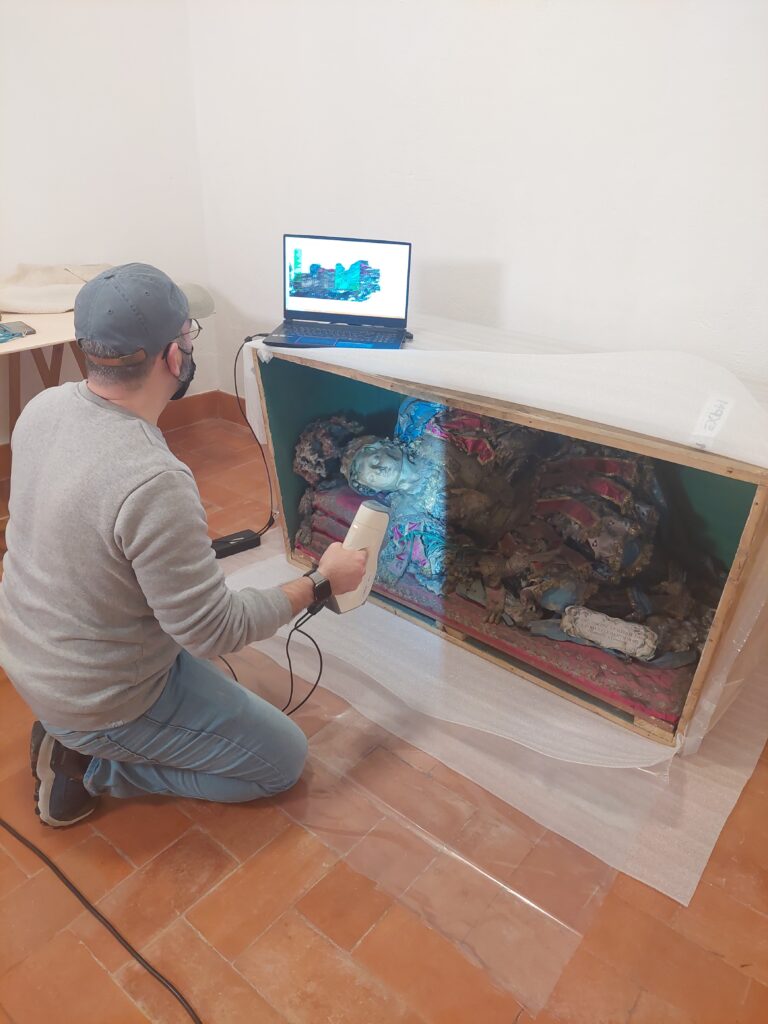St Clemente
The last simulacrum to be uncovered, the corpo santo of St Clemente is housed in the chapel of the Palácio Nacional de Queluz, where it remained largely unnoticed for decades. It is currently located on the side altar of the chapel, on the Gospel side, subtly integrated into the decorative ensemble. It presents a fragile state of conservation, with noticeable bone loss in the hands, legs, and feet, highlighting the urgency of further documentation and preservation efforts.
The simulacrum is accompanied by a paper cartouche bearing the inscription that offers further clues regarding its provenance
“SAC. CORPUS. CUM. VASE SAN / GUINIS. S. CLEMENTIS MART. / e Coemeterio S. Laurentij”



In February, a technical study was carried out using the same methodology applied to other known specimens: detailed photographic documentation, multispectral imaging, and material sampling for laboratory analysis.
This is a particularly compelling case, as the simulacrum of St Clemente bears strong similarities to other examples already inventoried in Portugal. Future research will focus on comparative analysis with other relics to help identify patterns, stylistic consistencies, and possibly even production ateliers responsible for their creation.



